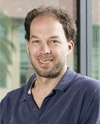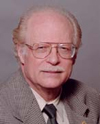Opportunities in Modeling Tumor Growth
By Mathukumalli Vidyasagar
An approach to a multi-stage cancer therapy is proposed, based on an identification of dangerous (“driver”) genetic variations present in individual tumors that are likely to give rise to initial cancers and to cases of remission.
One of the fascinating aspects of cancer is that there are a great many unknown factors regarding its onset and further growth.
The onset of cancer is still widely believed to be a random event. There are of course both environmental as well as genetic factors that are associated with enhanced likelihood of contracting cancer. For instance, smoking, and exposure to radiation or to certain carcinogenic chemicals will increase the risk of cancer but will not guarantee the onset of cancer. Similarly, mutations in the BRCA1 or BRCA2 genes are associated with enhanced risk of breast and ovarian cancer in women, but the risk is by no means 100%. One of the confounding aspects of genetic association studies is that for the most part one has access only to posterior probabilities (e.g., the fraction of breast cancer patients that have BRCA mutations), whereas what one would like to know are prior probabilities (the fraction of women with BRCA mutations that eventually contract cancer). As the cost of determining a person’s genome (DNA sequence) continue to drop, there are hopes that so-called GWAS (Genome-Wide Association Studies) will permit the scientific community to get a better handle on prior probabilities – that is, the likelihood that certain genetic variations are highly indicative of the likelihood that the individual will eventually contract a certain form of cancer. But for the moment many of these associations are still in the realm of guesswork. My own guess is that genetic variations are by themselves not very indicative of the likelihood of contracting cancer; environmental effects (living in a polluted environment, poor lifestyle etc.) are better indicative factors. However, genetic factors are of paramount importance in predicting an individual’s responsiveness to therapy once cancer has set in. But this is just my own guess and needs to be verified.
The topic of this column is finding mathematical models for what happens after cancer has been initiated. The most simplistic model is that one or more mutations in the DNA of a cell gives a “fitness advantage” to that cell, permitting it to replicate more frequently, and/or die less frequently, compared to cells with normal DNA. In this simplistic model, if cancer is initiated in a small subset of a population of cells, the fraction of caner cells would grow roughly exponentially, with a very small exponent. This is why cancer takes many years to manifest itself. But observations of actual tumors reveal that they do not in fact grow in this slow and steady manner. Instead there is a very long nearly quiescent period, lasting many years in most cases, followed by a very rapid increase in the number of cancerous cells, or the size of the tumor. This rapid increase phase can last as little as a few weeks, and is often of the order of months. So a simple exponential growth model is definitely inaccurate. But what is an accurate model, and how can the model be tied to “biological realism”?
Side by side with the issue of modeling the growth rate of a tumor is that of modeling the heterogeneity of a tumor. Until very recently, instrumentation for analyzing properties of tumors would, for the most part, compute the population average over a large number of cells. As a result, the belief was that a tumor consisted of a mixture of normal DNA and one dominant mutant DNA. This observation was reinforced by the study of the growth of tumors in animals such as mice. However, in order to induce tumors to grow in mice, the mice are first “immuno-compromised” to ensure that they do not reject the foreign body (a bit of human tumor). As a result, tumors in mice are almost “pure mutant DNA” whereas human tumors are not. Now, with improved instrumentation, it is possible to observe that human tumors are in fact not homogeneous at all – rather, they consist of normal DNA as well as tumors with two or more mutant DNA variants.
Therefore a researcher attempting to construct mathematical models for cancer growth is confronted with two distinct problems:
- Constructing a mathematical model that captures the observed growth pattern of tumors, that is, a long nearly quiescent period followed by a short period of rapid growth.
- Permitting multiple mutations that result in heterogeneous tumors, and modeling the effect of therapy on such tumors.
Current attempts to address the first issue are based on dividing DNA mutations into two categories, referred to by the rather colorful names of “driver” and “passenger” mutations. Note that the phrases “causal” and “coincidental” mutations are also used. The theory is that “passenger” mutations by themselves are quite harmless. However, if a “driver” mutation occurs in the presence of a sufficient number of passenger mutations, then the resulting mutant DNA has a significant fitness advantage over normal cells, thus leading to cancer.
One of the most comprehensive analyses of breast and colorectal tumors [1] has led to the observation that the average tumor has just about 80 mutations (compared with the 3.3 billion nucleic acid symbols that make up human DNA). Moreover, out of these 80 mutations, only about 15 believed to be “drivers.” Attempts to determine which mutations are drivers and which are passengers are confounded by the fact that most mutations are found in exactly one tumor, thus making any kind “frequency analysis” meaningless.
As a result, the theoretical biology community has attempted to “postulate” mathematical models, in the hope that the solutions to these models would replicate the observed behavior of tumors, especially the long quiescent initial period, followed by rapid proliferation. By far the most popular models involve branching processes, a special kind of stochastic processes that were originally proposed as models for nuclear reactions. These models are discrete-time in nature. The basic idea is that the likelihood of a particular mutation occurring during a particular unit interval of time is proportional to a mutation rate, which is smaller for driver mutations than for passenger mutations. Thus for a very long period of time, there are only passenger mutations, thus leading to very slow tumor growth, possibly even “benign” (as opposed to “malignant”) tumors. However, once a driver mutation occurs, the combination leads to very rapid growth of the tumor. Some of the pertinent references are [2 – 4] below.
This raises an important epistemological question. Even if one were to succeed in constructing some mathematical models of tumor progression, it does not of course follow that this is what happens in nature. In other words, even if a set of equations is able to replicate the gross behavior of tumors, it does not follow that the fine details of the model are accurate. It is very important that the models closely follow actual biological processes. It is even more important for the individual parts of the model to be experimentally verified. This kind of coupling between theory and experiment is essential in order for progress in this area.
The last topic to be discussed is the effect of therapy on cancer. For the most part cancer therapy consists of surgery and/or chemotherapy (or radiation therapy), with the hope that the tumor will go away and not recur. Unfortunately a very large fraction of tumors do in fact recur; more crucially, the recurred tumors are often resistant to the original therapy. Now the construction of mathematical models just may offer a systematic approach to the design of therapy.
Specifically, some persons in cancer biology conjecture that the “initial” tumor is rather heterogeneous, with multiple mutant DNA cells. The initial therapy kills most, or perhaps all, of the dominant mutations, thus clearing the way for less dominant mutants to proliferate, leading to tumor recurrence.
In this world-view, recurred tumors are both more homogeneous as well as more resistant to the initial therapy. Therefore therapy should be multi-stage, and consist of not just one set of chemotherapy, but multiple sets of of chemotherapy, each meant to address successive generations of dominant mutations. With advances in instrumentation, there is now the possibility of determining several DNA mutations within one tumor (whereas earlier all one could measure was some kind of average behavior of all of these mutations). However, this information by itself is not useful, unless it is coupled with mathematical models that can be used to predict which set of mutations are initially dominant in determining tumor growth, which will be dominant in a recurred tumor, and so on. In short, the cancer therapist must consider the recurrence of the tumor to be almost inevitable, and be prepared for follow-up therapy.
What is sketched here is a very ambitious program that couples mathematical modeling, experimental biology, and clinical practice. Clearly it would take a long time for this approach to bear fruit. The author is persuaded however that anything less ambitious would not lead to a holistic approach to cancer therapy, and lead instead only to disappointment.
For Further Reading
1. Laura D. Wood et al., “The Genomic Landscapes of Human Breast and Colorectal Cancers,” Science, 318 (1107), 1108-1113, 21 November 2007.
2. T. Antal and P. Krapivsky, “Exact Solution of a Two-Type Branching Process: Models of Tumor Progression,” Journal of Statistical Mechanics: Theory and Experiment, 8-18, 2011.
3. I. Bozic et al., “Accumulation of Driver and Passenger Mutations During Tumor Progression,” Proc. Nat’l. Acad. Sci. (USA), 107, 18545-18550, 2010.
4. M. Gerstung and N. Beerenwinkel, “Waiting Time Models of Cancer Progression,” Mathematical Population Studies, 17, 115-135, 2010.
Contributor
 Mathukumalli Vidyasagar is the Founding Head of the Bioengineering Department, University of Texas at Dallas. He is a Fellow of the Royal Society, UK. Read more
Mathukumalli Vidyasagar is the Founding Head of the Bioengineering Department, University of Texas at Dallas. He is a Fellow of the Royal Society, UK. Read more







 Dr. Stephen Quake, D.Phil., is a Professor of Bioengineering and of Applied Physics at Stanford University. He pioneered the development of Microfluidic Large Scale Integration (LSI), demonstrating the first integrated microfluidic devices with thousands of mechanical valves.
Dr. Stephen Quake, D.Phil., is a Professor of Bioengineering and of Applied Physics at Stanford University. He pioneered the development of Microfluidic Large Scale Integration (LSI), demonstrating the first integrated microfluidic devices with thousands of mechanical valves.  H. Chitsaz is assistant professor of Computer Science at Wayne State University, Detroit, MI. He received his Ph.D. in Computer Science and M.S. in Mathematics from the University of Illinois at Urbana-Champaign.
H. Chitsaz is assistant professor of Computer Science at Wayne State University, Detroit, MI. He received his Ph.D. in Computer Science and M.S. in Mathematics from the University of Illinois at Urbana-Champaign.  Mathukumalli Vidyasagar is the Founding Head of the Bioengineering Department, University of Texas at Dallas. He is a Fellow of the Royal Society, UK.
Mathukumalli Vidyasagar is the Founding Head of the Bioengineering Department, University of Texas at Dallas. He is a Fellow of the Royal Society, UK.  Usmah Kawoos (S '05-M '09) received the Ph.D degree in biomedical engineering from Drexel University, Philadelphia, PA. Dr. Kawoos is currently working as a post-doctoral fellow at the Naval Medical Research Center, Silver Spring, MD.
Usmah Kawoos (S '05-M '09) received the Ph.D degree in biomedical engineering from Drexel University, Philadelphia, PA. Dr. Kawoos is currently working as a post-doctoral fellow at the Naval Medical Research Center, Silver Spring, MD.  Xu Meng (S '08-M '13) received the Ph.D. degree in biomedical engineering in 2013 from Drexel University, Philadelphia, PA. His research interests are the clinical application of microwave and RF in medical implants and telemedicine.
Xu Meng (S '08-M '13) received the Ph.D. degree in biomedical engineering in 2013 from Drexel University, Philadelphia, PA. His research interests are the clinical application of microwave and RF in medical implants and telemedicine.  Arye Rosen (M '77-SM '80-F '92) received the Ph.D. degree in electrical engineering from Drexel University, Philadelphia, PA. Dr. Rosen currently holds an appointment as Academy Professor of Biomedical and Electrical Engineering in the School of Biomedical Engineering, Science and Health Systems and Associate Vice Provost for Strategic Initiatives at Drexel University, Philadelphia, PA.
Arye Rosen (M '77-SM '80-F '92) received the Ph.D. degree in electrical engineering from Drexel University, Philadelphia, PA. Dr. Rosen currently holds an appointment as Academy Professor of Biomedical and Electrical Engineering in the School of Biomedical Engineering, Science and Health Systems and Associate Vice Provost for Strategic Initiatives at Drexel University, Philadelphia, PA.  Mikulas Chavko received the PhD degree in Biochemistry from University of Veterinary Medicine in Kosice, Czechoslovakia. Currently, he serves as a Principal Investigator and Head of Blast Research in the Neurotrauma Department at the Naval Medical Research Institute.
Mikulas Chavko received the PhD degree in Biochemistry from University of Veterinary Medicine in Kosice, Czechoslovakia. Currently, he serves as a Principal Investigator and Head of Blast Research in the Neurotrauma Department at the Naval Medical Research Institute.